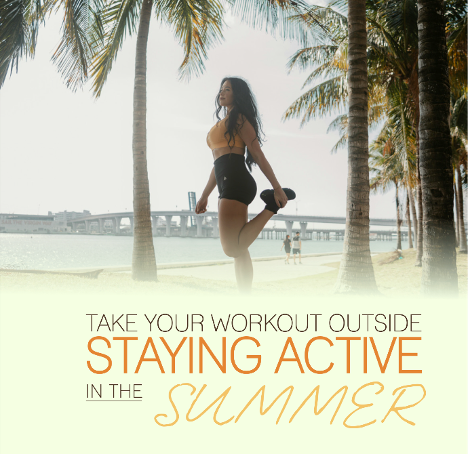BY: Jody Trierweiler
Though the majority of Americans workout indoors, outdoor workouts can be invigorating and offer benefits that indoor workouts can’t. According to a 2023 study, 51% of US exercisers prefer an at-home workout. This makes it easy to take your workout outside when the weather permits.
When the weather cooperates in the summer months, there are numerous benefits to exercising outdoors.
Here are a few things you may not be aware of:
RED LIGHT AND INFRARED LIGHT THERAPY
Plants, especially those with chlorophyll such as leaves on trees, are known to reflect infrared light. Studies suggest that spending time in green spaces exposes the body to red light from the plants. This may be associated with reduced risk of certain health issues such as diabetes and hypertension, wound healing, skin health, reduced inflammation, and improved muscle performance. While promising, more extensive research is needed to understand the potential benefits of Red Light and Infrared Light Therapy. Surround yourself with trees and plants, consider a trail hike, run, or bike ride.
LIMITED SUN EXPOSURE
The benefits of limited sun exposure are numerous. You can gradually expose parts of your body to the sun (never your face) for up to a maximum of 10-15 minutes a day to absorb the sunlight and the multiple benefits. Most people know that our bodies synthesize vitamin D (a hormone that plays a role in immunity among many other roles) from sunlight, but it also helps us create nitric oxide (vasodilator that lowers blood pressure), serotonin (feel good neurotransmitter), melatonin (controls sleep cycles). So, just a few of the MANY things the sun helps our bodies do = keep a strong immune system, lowers blood pressure, decreases anxiety and depression, and improves sleep.
“FRESH” AIR
Fresh air is a term we often use to refer to outdoor air that is fresh, clean, and low humidity. But you should check the air quality before exercising outdoors. Most weather apps on your device will give you a measure of air quality. Fresh air in nature can help decrease your anxiety levels and can help lessen stress and feelings of anger. Exercise on its own lowers anxiety, but it’s even better when you’re outside!
LOWER RISK OF DEPRESSION
Regular access to green spaces has been linked to lower risks of depression and improved concentration and attention. Nature can also have benefits for children. One study in Denmark examined 900,000 residents born between 1985 and 2003. They found that children who lived in neighborhoods with more green space had a reduced risk of mental disorders later in life.
If you choose to exercise outside, consider doing it earlier in the day when temperatures are cooler. Try to avoid 10am – 2pm when the sun is at its peak. Evenings can also offer cooler temperatures and more shady opportunities.
Exercising in extreme heat is a bad idea because you can easily become dehydrated from excess sweating that causes loss of important electrolytes. Heat stroke is also a concern that should be taken seriously. Stay adequately hydrated by consuming 16-20 ounces of water or sugarless electrolyte drink for every hour of sweating. Take small sips throughout the workout, every 10 minutes or so, don’t drink it all at once.
Jody Trierweiler, C.N.C is a CM Magazine Contributor, and health and fitness expert in Metro Detroit. Follow her and shop supplements @jodysfitlife on Instagram and Facebook, or see her on Live In The D on WDIV-4 NBC Detroit. Take one of her fitness classes at Life Time Fitness in Bloomfield Hills, or Club Studio in Troy, Michigan.



